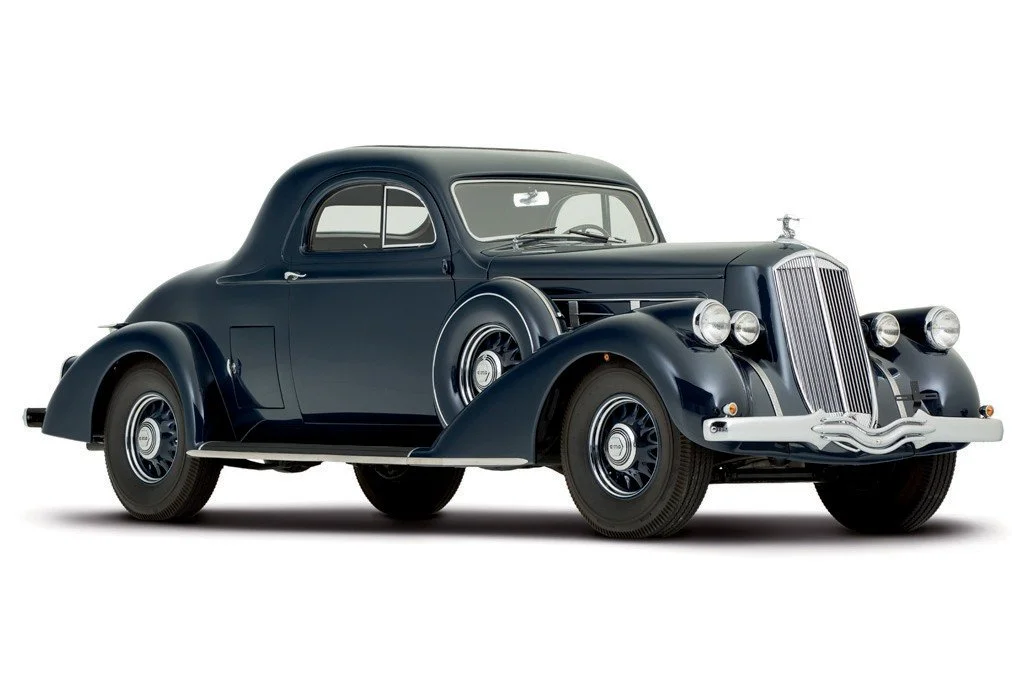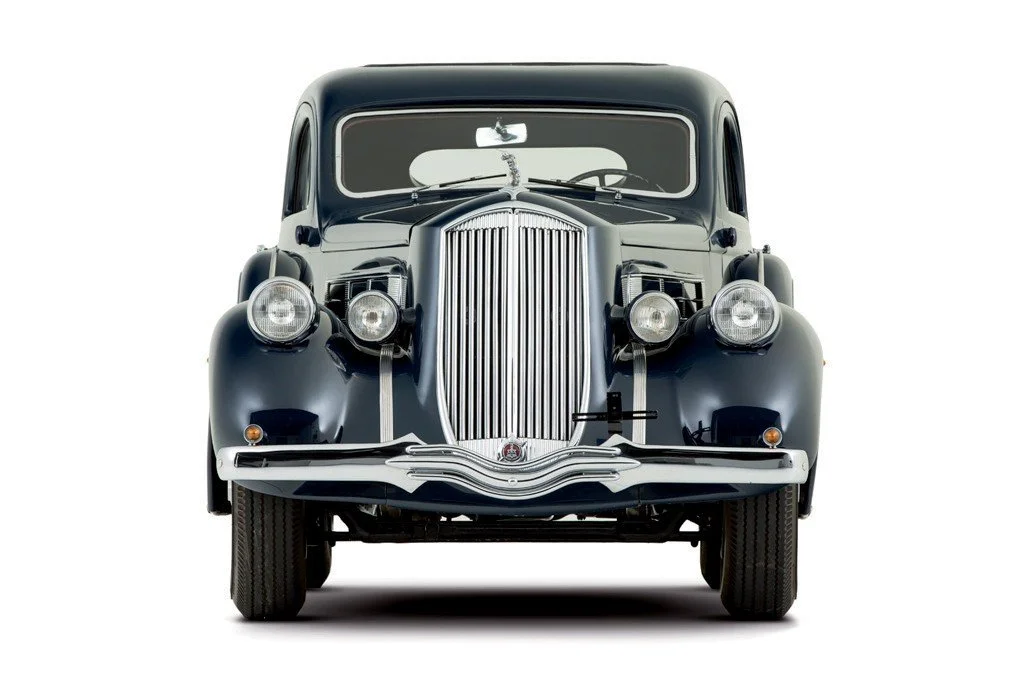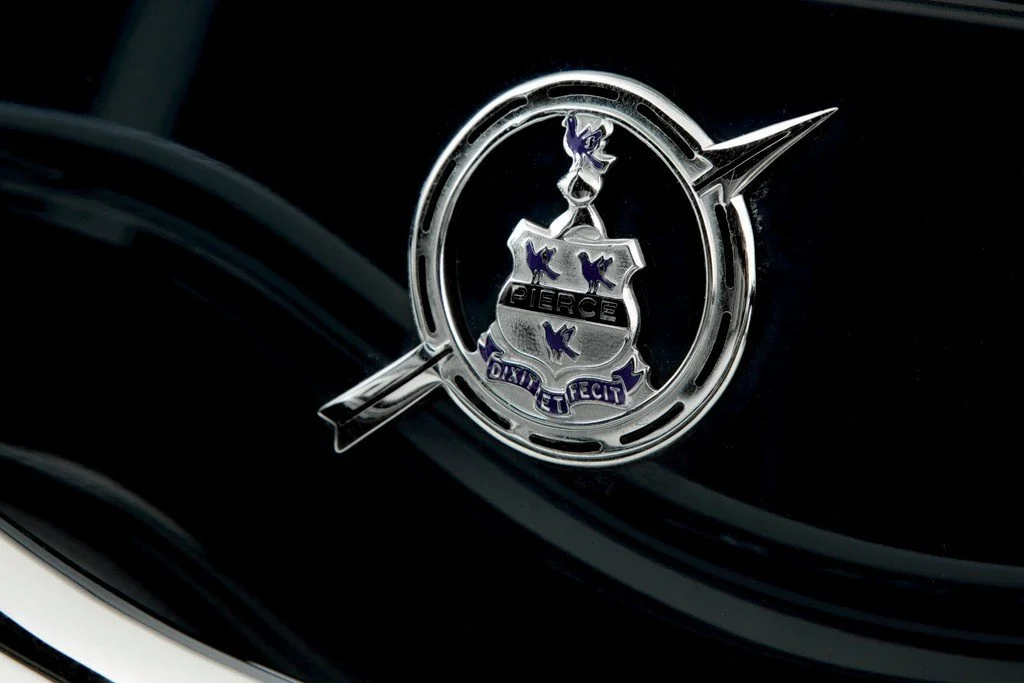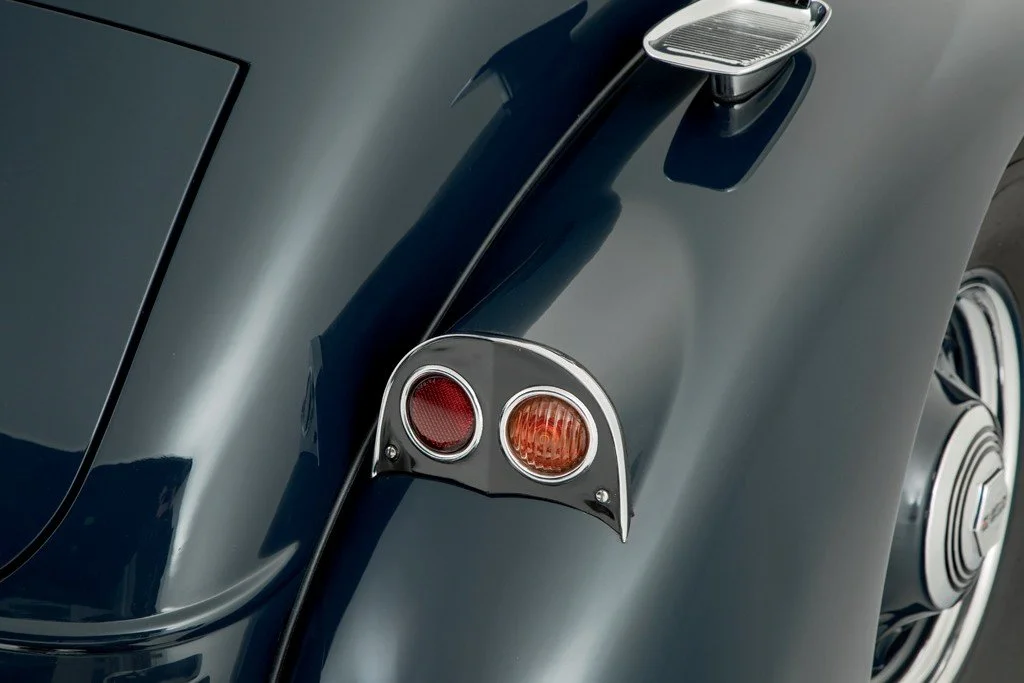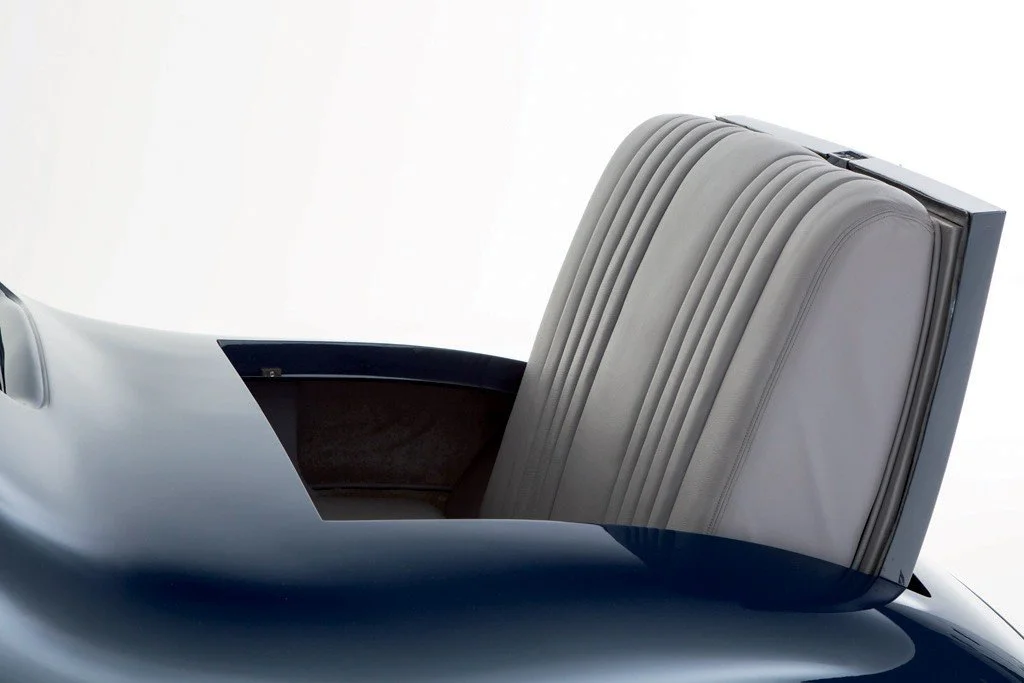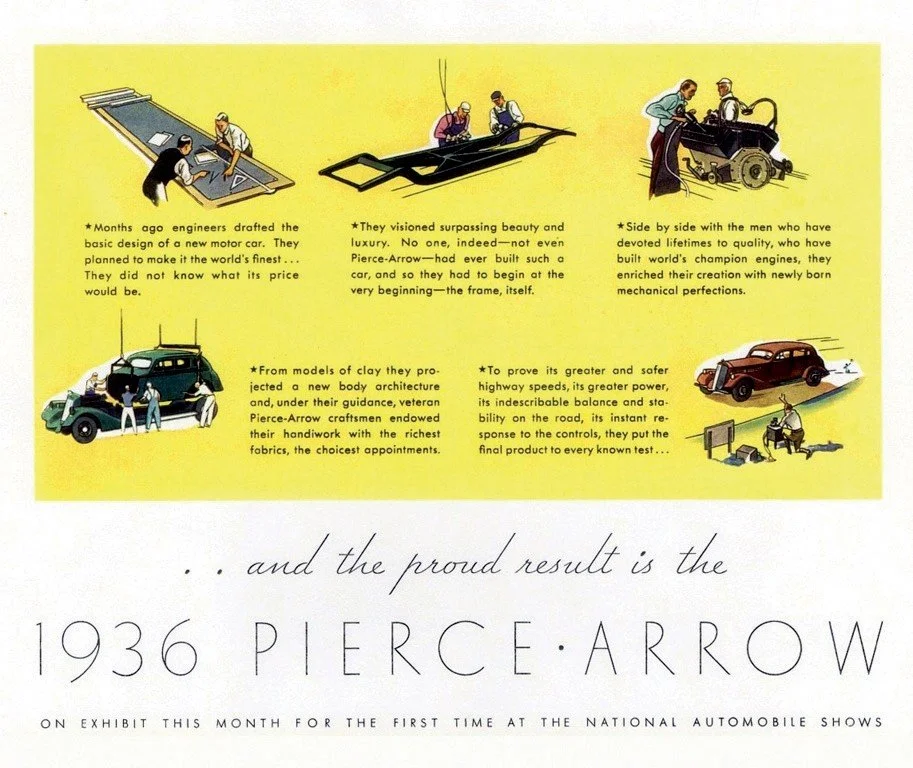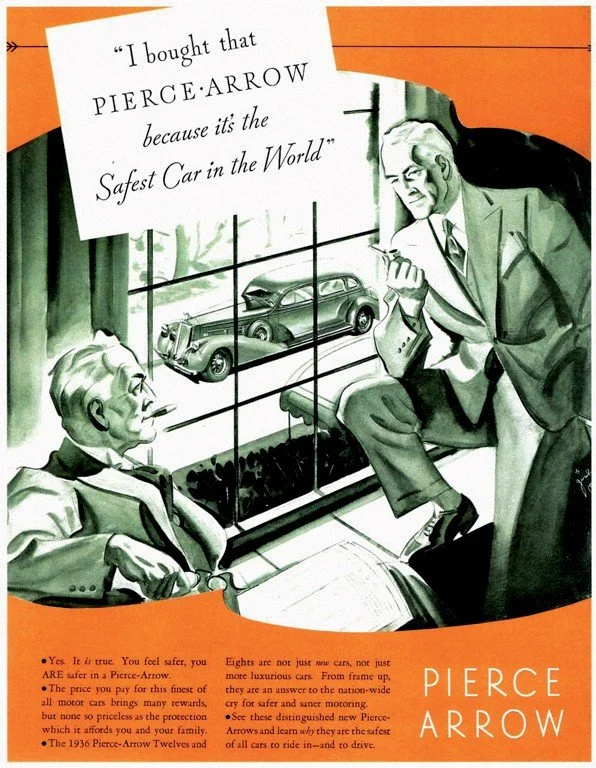-
Launched in October 1935, the 1936 Pierce Arrow was advertised as “The World’s Safest Motorcar” and could boast more than 30 important improvements over the old models. The most important were the larger brakes with power assist, giving the best brake performance in the industry. The radiator was moved forward, to ease the installation of a new steering box, which provided even less effort by the driver. Pierce had always been easy to drive, but the revised steering geometry, suspension and weight distribution offered an outstanding ride and handling. Both the straight-eight engine and the V12 were given a power boost, thanks to new heads and raised compression ratio. The styling was improved, with a more rakish radiator, skirted fenders and built-in trunk. Even with all these features, only 787 Pierce Arrows were built, a sad end for one of the most prestigious brands in the U.S.
This rare V12 Salon Coupe Series 1602 was purchased by the Nicola Bulgari Car Collection in 2000, from Beaulfont Restorations in the UK, as a complete restoration done by them. -
Company
Pierce Arrow Motor Car CompanyWheelbase
139inInterior trim
Grey leatherBrakes
front and rear drumsMake
Pierce ArrowLength
212inEngine
V12 - 462cidTires
7.50x17Model
Series 1602 Salon CoupéWidth
76inCarburetor
2 StrombergOriginal Price
$3,695Body style
2-door CoupeWeight
4655lbsHorsepower
185hp @ 3400rpmProduction
787Model year
1936Exterior paint
BlueTransmission
Synchro-shift 3-speed manual -
Of all the great American marques, Stutz, Lincoln, Packard, Cadillac and all the others, none was more synonymous with great craftsmanship and refined luxury than Pierce Arrow. An offshoot of the George N. Pierce Company of Buffalo, New York, one-time bicycle and bird-cage manufacturer, the Pierce Arrow Motor Car Company had achieved a position of prominence by the mid-twenties. The company began car manufacturing in 1908, catering to the most affluent part of the market. They were marketed as much more than simply a car, but rather as a symbol of wealth and status. In 1909, President Howard Taft requested two Pierce-Arrows to serve as official cars of the White House. Pierce-Arrows served as presidential vehicles from Taft to Roosevelt. Foreign royals, diplomats and business tycoons, including John D. Rockefeller, the Shah of Persia, J. Edgar Hoover, the secret service, and many more all drove Pierce-Arrows. Famous Americans like aviation pioneer Orville Wright and hall of fame baseball player Babe Ruth also had Pierce-Arrows in their personal car collections. Pierce-Arrow introduced larger, more powerful cars in 1915 and 1916, offering more luxury options. The company achieved profits of $4 million per year. Pierce-Arrow’s success reached its peak during World War I, producing a great number of trucks that were used in Europe. The War ended and Pierce-Arrow’s success and popularity continued to grow. Unfortunately, managerial conservatism led to stagnation, and by the mid-twenties, Pierce-Arrow cars were technically outdated, despite their reputation for excellence. By 1929, the company was deep in the red, its products still admired by the public, but severely outdated. In mid-summer 1929, after months of negotiations, Studebaker Corporation took control of Pierce-Arrow. Albert Erskine, Studebaker’s president, wanted a prestige nameplate for the automotive empire he was hoping to assemble in South Bend, Indiana. Huge capitals were transferred to the empty bank accounts of Pierce Arrow, so that the new projects on the drawing board could be completed. The new “Eight” debuted in late 1929 and was equipped with a state of the art straight-eight engine, the most advanced on the market, and a new chassis that gave better braking and better handling than the older six cylinder cars. Besides being extremely attractive, the new Pierce-Arrows were also cheaper and enjoyed tremendous success. The 1929 depression saw 1930 Pierce sales drop to about half of the year before, and 1931 was still worse, with only 4,500 cars sold, 46% less than 1929 record year. In response to the dramatic situation, Pierce-Arrow decided to introduce a new V12 engine for 1932, installed on a new modern chassis and using new bodies. However, sales continued to decline, amounting to only 2,600 cars sold. For 1933, the cars were given a slight facelift, with skirted fenders, while the engines were improved with more horsepower, and power brakes and automatic choke made the car more enjoyable on the road. In late, 1932 Roy Faulkner, former president of Auburn, took over as sales manager. His promotional efforts, like the limited edition Silver Arrow and the speed runs conducted by famed race-car driver Ab Jenkins, were apparently successful, at least initially. However, various strikes at external suppliers interfered with the fragile recovery, and by the end of 1933, almost 400 cars were lost. Albert Jenkins, president of Pierce-Arrow, committed suicide in July, leaving the company strangled by debts. Studebaker was in the same troubled waters, so Pierce-Arrow was sold to Buffalo Management for only one million dollars. Production resumed, all debts were cancelled, and for the first time in many years the company had a small profit at the end of 1933. For 1934, Pierce debuted with some greatly improved models, but sales were dismal, losing about one million dollars by the end of 1934. Some new funds were injected into the ailing company in May 1935, in the hopes of reaching a break-even target of 1000 cars sold annually. The 1935 models were almost identical to the 1934 models, but at less than 800 units sold, there was no future. In December 1937, Pierce-Arrow filed for bankruptcy, putting an end to one of the greatest cars ever produced.

